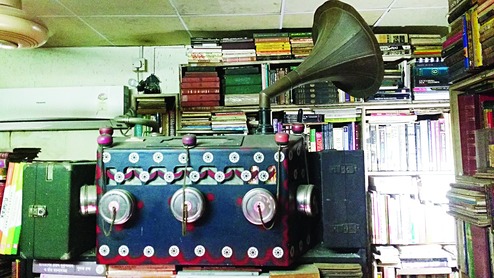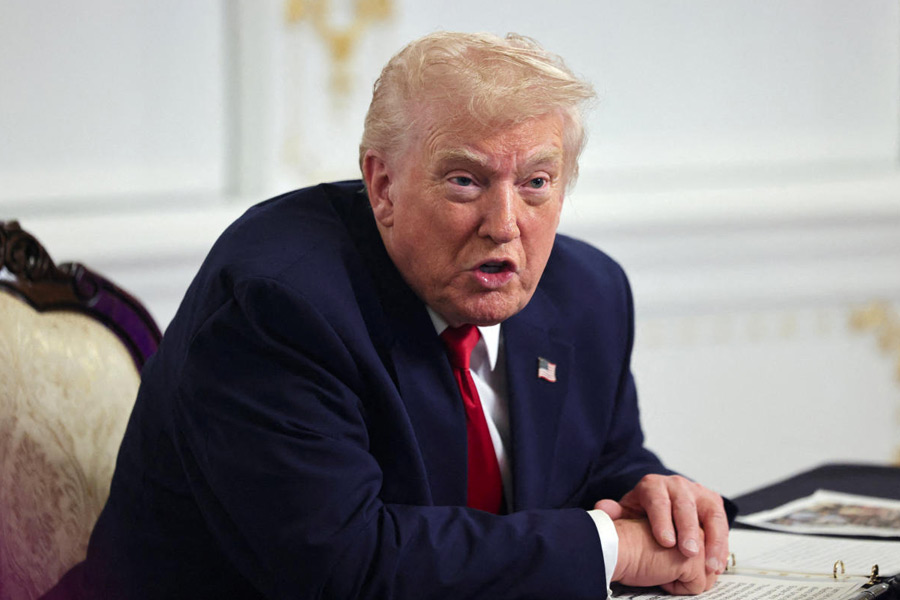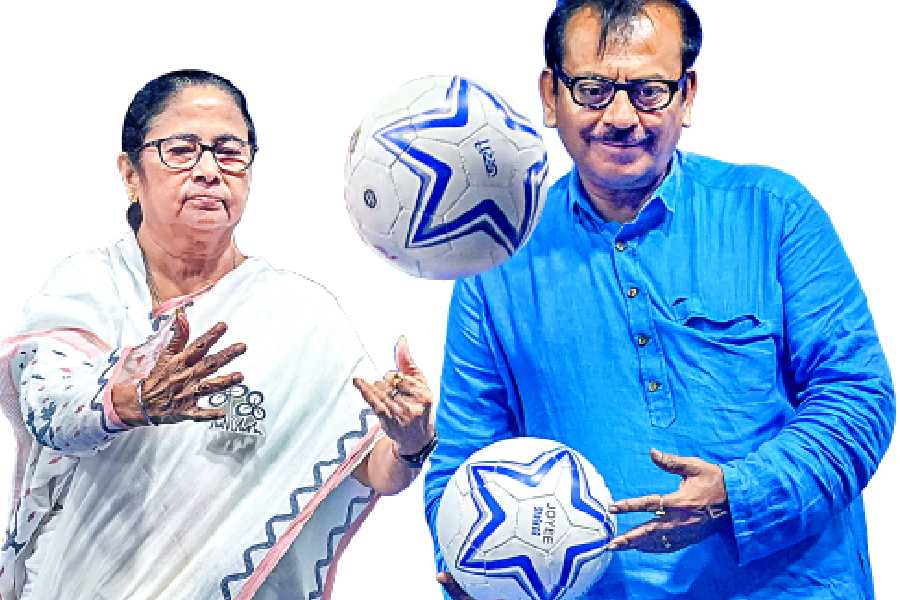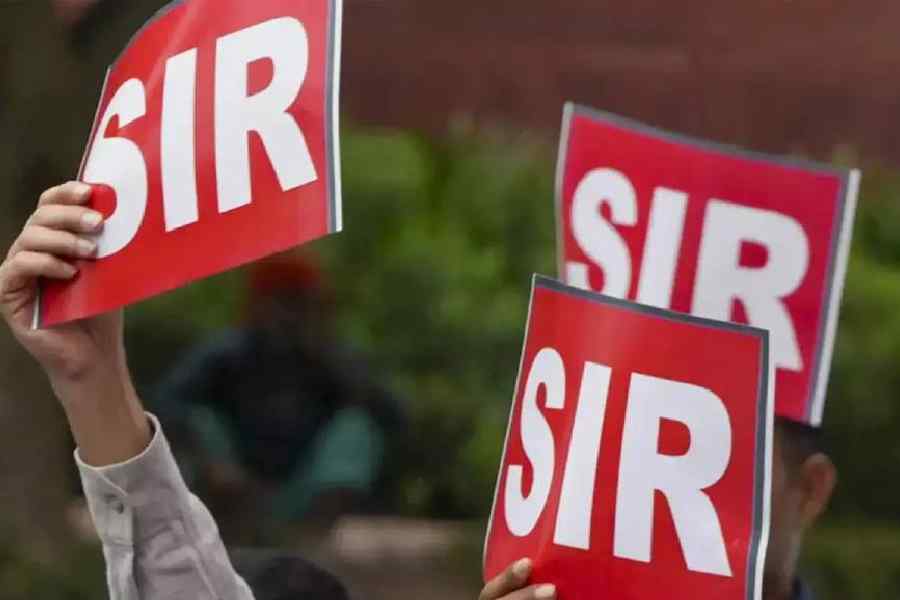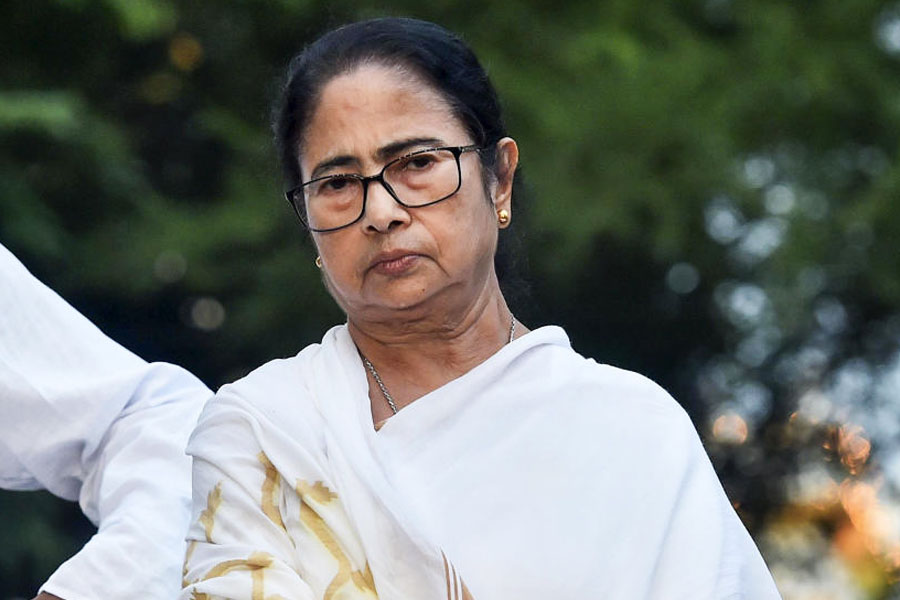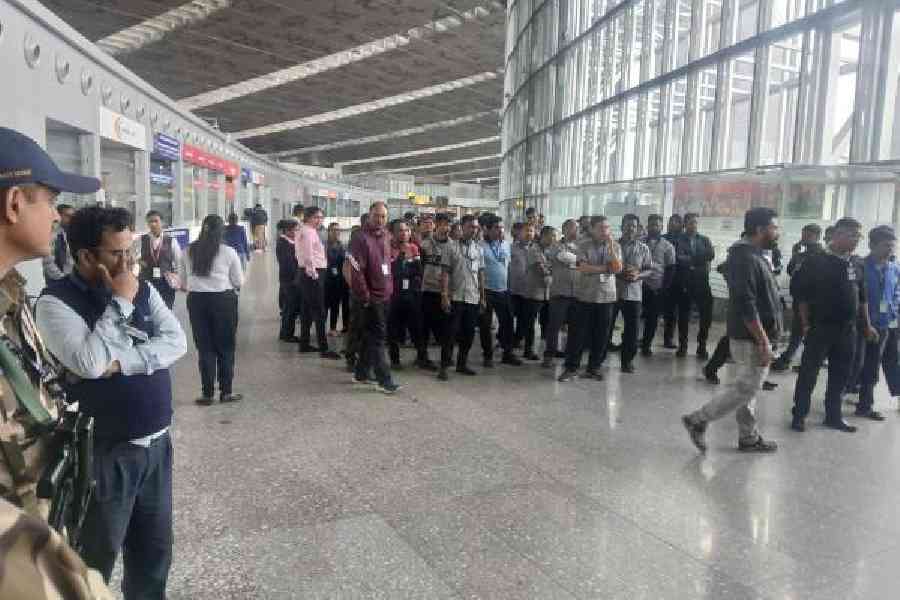




Devajit Bandyopadhyay's south Calcutta lair is decently sized at 1,100 or so square feet. Nevertheless, once inside, you feel like you have been squeezed into a matchbox. All the narrow passages, nooks and spaces in the apartment are packed and pouring out.
"It all began with some theatre booklets and manuscripts, but now the jonjal (junk) is pushing me out of my house," says Bandyopadhyay, as he leads the way to his study - another cramped space with rows of bookshelves packed with books, journals, shellac records, scripts, notations...
Some of the items date back to 1795; the collection itself reflects the rich heritage of Bengal's theatre.
One settles downs into a chair, gingerly, careful not to stretch those legs or arms lest they ruin a string of the sarod that once belonged to maestro Ustad Karamatullah Khan (18th century) or the sarengi of Ustad Sagiruddin Khan (19th century). A vintage phonograph lies in one corner of the floor. A bioscope box jostles for space with a cine-projector of Soumendranath Tagore, communist leader of the 1960s.
Bandyopadhyay has been collecting all things related to music since he was a teenager in Howrah. He is now 63. "My mother was a theatre buff. As I was her youngest son, she doted on me and would take me to the theatre almost every weekend," says Bandyopadhyay. "I'd collect theatre booklets and folders after each show."
Those were the days when Shyambazar in north Calcutta had a bustling theatre para (neighbourhood) frequented by stalwarts such as Kanan Devi and Utpal Dutt. Today, most of the old auditoriums in the area have been converted into either a cinema or a shopping mall. "This is how those theatres looked then," he says as he spreads out a ground plan of theatre houses. He points out on it Shyambazar's Cornwallis Theatre, which is now Sree Cinema, Alfred Theatre (now Grace Cinema), Opera House (now Roxy) and Crown Theatre (the erstwhile Uttara and now a shopping mall). All of them look very different; most of them were built by Jamshedji Framji Madan. The Parsi theatre and film magnate had been a pioneer exhibitor, distributor and producer of plays in the early 20th century.
Bandyopadhyay, who tells a rambling tale, from time to time dwells on his "great love" for music - his solo performances in classical music as a teenager and so on. But when it came to choosing a career, he disregarded the obvious arts connect and like the obedient son took up the family profession of accountancy. Deep within him, however, a tug-of-war raged. It finally resolved itself in 1992. The arts won. By 1996, he completed his doctoral thesis on Bengali theatre music from Jadavpur University.
Bandyopadhyay's collection features a number of rare and unusual records and phonograph machines that played them on manually-operated turntables. "You'll find Gauhar Jaan's seven-inch shellac records, as well as by those by courtesans Sashimukhi and Phanibala, who were members of the Classic Theatre Company," he says. These were all recorded in 1902 by American musician-engineer William Gaisberg at Calcutta's Great Eastern Hotel.
The records were "pressed" [copied into seven-inch diametre discs in hard rubber or lacquer] at Hanover in Germany, before being distributed across India. "Initially, we had only foreign companies - Gramophone Company, Nicole, Xonophone, Pathe, Beka, Odeon, etc. - but gradually Indian companies like Ramagraph, Megaphone and Hindustan took over," says Bandyopadhyay. "Courtesans like Indubala, Angurbala and Krishnabhamini cut records which went on to become extremely popular," he adds.
Initially, most woman artistes in Calcutta's theatres, too, were courtesans. They were considered stars or cultural icons at musical soirees hosted by the "babus" (gentry) in their baganbaris (farmhouses). "I came across several packs of playing cards featuring coloured pictures of these courtesans. These were issued by the British American Tobacco Company to promote the "Pedro" brand of cigarettes in 1911," says Bandyopadhyay.
One of his most valued possessions is a recording of Banabiharini, a 1904 musical featuring Binodini Dasi or Noti Binodini, the famous courtesan and star of Bengali theatre of the times. He also has lacquer records of plays that starred Ardhendu Shekhar Mustaphi (Sadhabar Ekdashi), Amarendra Nath Dutta ( Hariraj, an adaptation of Hamlet) and Nirmalendu Lahiri ( Siraj-ud-daula), and even a record of a song sung by none other than the German playwright, Bertolt Brecht.
In addition to the booklets and records, there are shelves stuffed with first edition plays by Michael Madhusudan Dutt, Amritalal Bose, Manomohan Basu and Dinabandhu Mitra. There is an 1821 edition of a collection of Shakespeare's plays, a manuscript of the play, The Disguise, by Russian linguist and pioneer of Bengali theatre Gerasim Lebedev. "The script was written in three sections - Bengali, English and Russian. During his stay in Calcutta he learnt Sanskrit and Bengali," says Bandyopadhyay. Manuscripts of performance texts that only the players could lay their hands on are tucked inside folios, and you can find handwritten personal scripts of plays by Sisir Bhaduri and Soumitra Chattopadhyay.
When Bandyopadhyay started collecting all things musical, he never imagined a humdrum hobby would assume such proportions. But now that it has, he frets no end about posterity. "For the last 10 years, I have been trying to archive these materials. Thanks to some grants, I have been able to digitise a portion (around 3,000 books and manuscripts). But the majority of the stuff is in a fragile condition."
He had appealed to both the central and state governments to offer him financial and technical support. Since none arrived, he built his own archive-cum-museum - in his ancestral house in Howrah. Says Sabyasachi Bhattacharya, historian and former chairman of the Indian Council of Historical Research, "Devajit's collection is unique. I don't know of any other individual who has made such an effort in personal capacity. The archive will be of immense help to scholars and researchers interested in Bengal's rich cultural heritage."
The Academy Theatre Archive was inaugurated on April 22. Bandyopadhyay has decided to name the main gallery after his mother, Indira. "She inspired me," he says. A fitting tribute.

